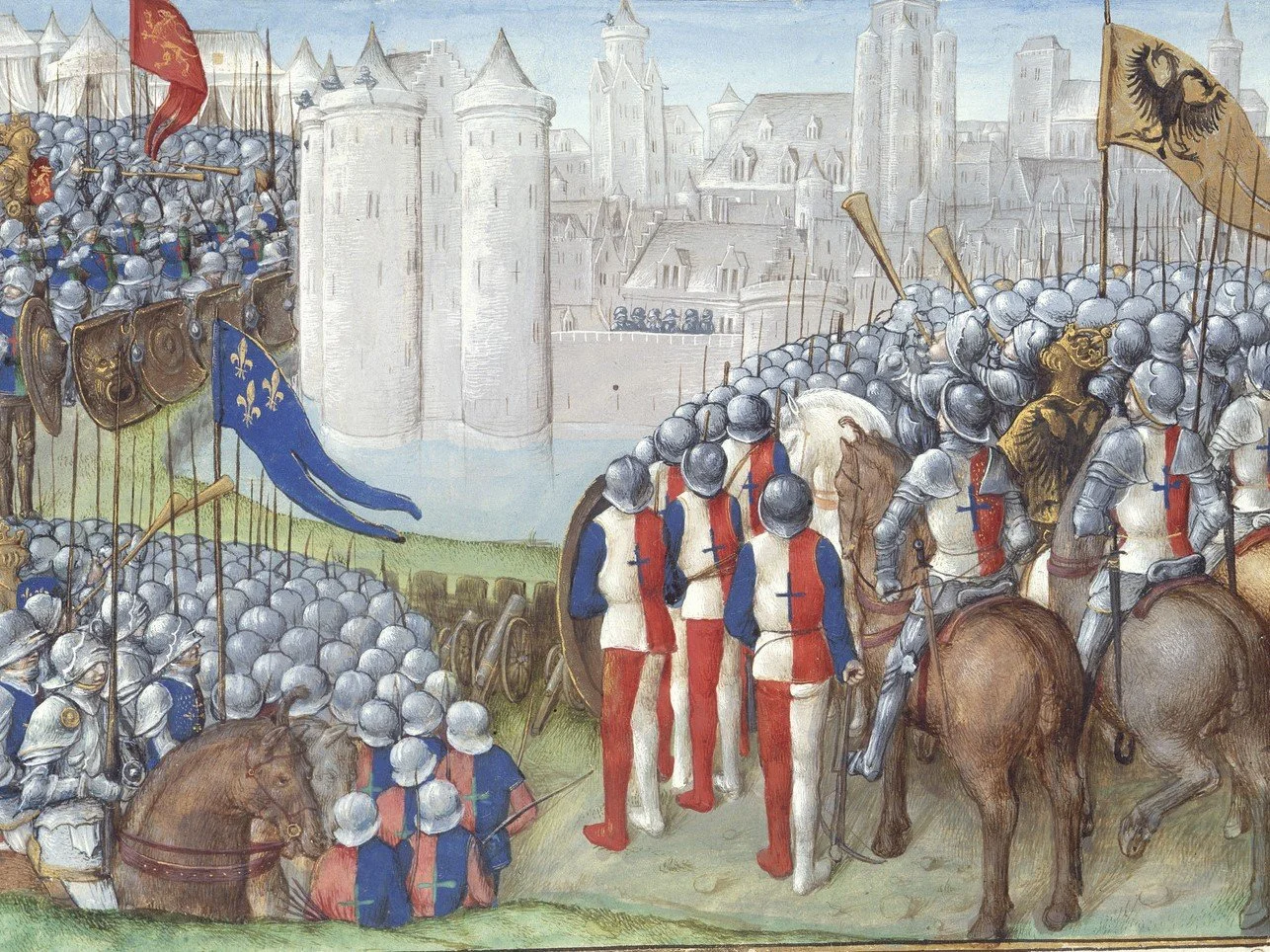Second Crusade - The Sequel Is A Flop
Sequels rarely live up to the reputation of the first. The Second Crusade was an epic flop.
(this is part four of twelve about The Crusades as a movie series)
After the conquest of Jerusalem, the Levant had four new feudal states ruled by Western Europeans: 1) the principality of Antioch, 2) the county of Edessa, 3) the county of Tripoli, and the big one, the kingdom of Jerusalem. Collectively, these are known as the Crusader States / the Latin East / Outremer. (ooh-tre-mehr, medieval French for “overseas”)
Demographically, Outremer was very different from medieval Europe. In Western Europe, almost everyone was a Catholic Christian. Outremer was a heterogeneous mix of Greek Orthodox, Armenian Christians, Shia and Sunni Muslims, Jews, and other faiths. Politically, these four states were similar to other feudal monarchies in Western Europe; just swap out the rain, mud, and gray skies for sun, olives, and palm trees. Very nice.
By the mid-1100s, ~150,000 Western European Catholics lived in the four Crusader States, which had an overall population of ~3 million. The ruling class spoke French, so the locals called them Franks, regardless of which country they were from. The locals spoke either Arabic or Greek. Très chic.
The Crusader States were allied, yet always squabbling with each other, with continually shifting alliances with neighboring Muslim states. If you’ve ever been on a road trip with siblings squashed together in the back seat, you understand the constant fighting that happens. Back off!
Into this complicated mix rode Zengi, a Turkish general who captured Edessa in 1144. This was the first significant territory lost for the Crusaders. The count of Edessa, won it back for about 20 minutes, then it was reconquered by Zengi's son Nur ad-Din. All the Christian men of the city were slaughtered, and the women and children were sold into slavery. Too harsh.
Back in Europe, people weren’t super concerned with the fate of Edessa, but there was a perception that Jerusalem was at risk, so the pope called for the Second Crusade (1147-1149) in December 1145. Deus vult!
Byzantine Emperor Manuel I did not ask for the crusade, nor did he invite the crusaders to rendezvous at Constantinople, but he was about to get both anyway. Because he could not handle both crusaders and Turks simultaneously, Emperor Manuel made a truce with the Seljuk sultan of Rum, the main Muslim ruler in Asia Minor. The crusaders saw this truce as an act of betrayal. Both sides probably had a point. It’s complicated.
In the summer of 1147, two royal armies headed East. England was busy with civil war, so they sat this one out. This time the crusade would not be led by mere dukes and counts, but by the biggest kings on the continent: King Louis VII of France and King Conrad III of Germany. Eleanor, duchess of Aquitaine, and queen of France, also joined, but she was no tag-along. She was far richer than her husband, and commanded more knights than he did too. Um, awkward.
After a series of minor battles in Asia Minor, the kings toured the holy sites of Jerusalem, snapped a few selfies, then finally convened a council at Acre to decide what to do next. Edessa was the reason they got going in the first place, so of course they promptly forgot all about it. Too hard.
Instead, they decided to attack Damascus, a city held by Muslims but that was often allied with Jerusalem in various regional conflicts. They besieged Damascus for a couple of days, decided it was too much for right now, and went back home. For real.
The Second Crusade accomplished nothing. Worse than nothing, it gained no territory for the Crusader States, it antagonized allied Muslim and Byzantine forces, it did nothing to weaken the armies of Islam, and it hurt the common people of the Crusader States. In every way, it made things worse for Outremer. Sheesh, whoops.
Nur ad-Din expanded his empire, taking Antioch in June 1149, Damascus in 1154, and Egypt in 1168. The crusaders traded a fragmented weak enemy for a united strong enemy. Smooth move.
After a hit movie, a sequel is almost inevitable.
There’s money to be had, so it’s easy to see why. But what’s less clear is why so often the sequel has none of the things that made the first movie such a hit: the script doesn’t make sense, there’s poor character development, none of the actors click on screen.
It’s as if execs believe that throwing money at the special effects budget will magically recreate the magic of the first film. Well, live and learn. Or more often, live and not learn, because a flop of a sequel doesn’t always spell the end of a franchise.
The studio thinks that maybe if it has more star power, the third one will be a success. And boy, oh boy, the Third Crusade was going to feature the biggest stars of The Crusades.





